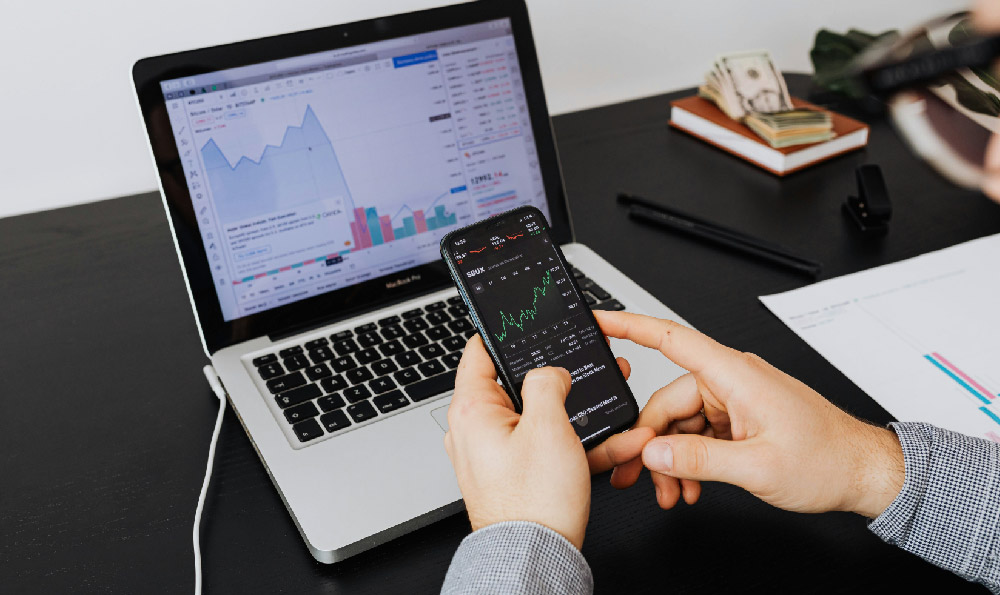Gold has been a store of value for millennia, revered for its intrinsic worth and perceived safety during times of economic uncertainty. Understanding how to invest in gold requires a multi-faceted approach, considering various investment vehicles and the prevailing market conditions. Let's delve into the intricacies of gold investment and assess whether it's currently a prudent choice.
Understanding the Appeal of Gold: A Hedge Against Uncertainty
Gold's enduring allure stems from its status as a safe-haven asset. During periods of inflation, geopolitical instability, or economic recession, investors often flock to gold as a means of preserving capital. Unlike currencies or stocks, gold is not tied to any specific government or company, making it a potentially more stable investment in turbulent times. Its limited supply further contributes to its perceived value. However, it's crucial to acknowledge that gold, like any investment, carries its own set of risks and rewards. It doesn't generate income like dividends from stocks or interest from bonds, so its value is solely dependent on its price appreciation.

Different Avenues for Investing in Gold
Several methods exist for investing in gold, each with its own advantages and disadvantages:
-
Physical Gold (Bullion, Coins, and Jewelry): This involves purchasing gold in its tangible form. Bullion, typically in the form of bars or coins, is valued for its gold content. Coins may also have numismatic value. Jewelry, while containing gold, often includes a significant markup for craftsmanship and design. The primary drawback of physical gold is the storage and security costs. You'll need a safe place to keep it, potentially requiring a safe deposit box or home safe. Furthermore, physical gold is not easily liquidated compared to other investment options.
-
Gold Exchange-Traded Funds (ETFs): Gold ETFs offer a convenient way to invest in gold without physically owning it. These funds track the price of gold and are traded on stock exchanges like regular stocks. They provide liquidity and are generally less expensive than storing physical gold. However, ETFs charge management fees, which can eat into your returns over time. It’s imperative to understand the fund's structure and how it mirrors the gold price.
-
Gold Mining Stocks: Investing in companies that mine gold is another avenue. The performance of these stocks is correlated to the price of gold, but it's not a direct correlation. Mining companies are subject to their own operational risks, management effectiveness, and geopolitical factors. Therefore, gold mining stocks can be more volatile than gold itself. Thorough due diligence on the company's financials and operations is essential.
-
Gold Futures Contracts: These are agreements to buy or sell gold at a predetermined price and date in the future. Futures contracts are highly leveraged, meaning you can control a large amount of gold with a relatively small investment. This amplifies both potential gains and losses. Gold futures are a complex investment vehicle suitable only for experienced traders with a high-risk tolerance.
-
Gold Streaming and Royalty Companies: These companies provide upfront financing to mining companies in exchange for a percentage of the mine's future gold production or revenue. They offer exposure to gold prices without the operational risks of running a mine. Researching the specific streaming or royalty agreement is crucial to understanding the potential return.
Assessing the Current Market Conditions for Gold Investment
Determining whether gold is a good investment "now" requires an analysis of several macroeconomic factors:
-
Inflation: Gold has historically been considered an inflation hedge. When inflation erodes the purchasing power of currencies, investors often turn to gold as a store of value. Monitoring inflation rates and central bank policies regarding interest rates is essential. If inflation is expected to rise, gold may become more attractive.
-
Interest Rates: Interest rates and gold prices typically have an inverse relationship. When interest rates rise, bonds and other fixed-income investments become more appealing, reducing the demand for gold. Conversely, lower interest rates can make gold more attractive.
-
Geopolitical Uncertainty: Political instability, wars, and international crises tend to drive investors towards safe-haven assets like gold. Following geopolitical developments closely can provide insights into potential price movements.
-
Economic Growth: During periods of strong economic growth, investors may prefer riskier assets like stocks, potentially reducing the demand for gold. Conversely, economic slowdowns or recessions can lead to increased interest in gold.
-
Currency Fluctuations: A weakening U.S. dollar, the currency in which gold is typically priced, can make gold more attractive to international investors, potentially driving up its price.
Developing a Gold Investment Strategy: Diversification and Risk Management
Regardless of the chosen investment vehicle, a sound gold investment strategy should prioritize diversification and risk management:
-
Diversification: Avoid putting all your eggs in one basket. Gold should be part of a well-diversified portfolio that includes stocks, bonds, real estate, and other asset classes.
-
Risk Tolerance: Assess your risk tolerance before investing in gold. Gold prices can be volatile, and you should be prepared for potential losses.
-
Investment Horizon: Consider your investment horizon. Gold is often viewed as a long-term investment.
-
Dollar-Cost Averaging: Instead of trying to time the market, consider investing a fixed amount of money in gold at regular intervals. This strategy, known as dollar-cost averaging, can help mitigate the risk of buying at the peak.
-
Stay Informed: Continuously monitor market news, economic data, and geopolitical events that could impact gold prices.
Avoiding Common Investment Pitfalls
Several pitfalls can derail your gold investment strategy:
-
Chasing Performance: Don't buy gold solely because its price has been rising. Past performance is not necessarily indicative of future results.
-
Ignoring Fees and Costs: Be aware of the fees associated with each investment vehicle, including management fees, storage costs, and transaction fees.
-
Falling for Scams: Be wary of unsolicited offers or promises of unrealistic returns. Deal only with reputable dealers and financial institutions.
-
Emotional Investing: Avoid making impulsive decisions based on fear or greed. Stick to your predetermined investment strategy.
Conclusion: A Cautious and Informed Approach to Gold
Investing in gold can be a viable strategy for diversification and risk management, particularly during times of economic uncertainty. However, it's crucial to approach gold investment with a well-informed and cautious mindset. Understand the different investment vehicles, assess the current market conditions, and develop a sound investment strategy that aligns with your risk tolerance and investment goals. Remember to prioritize diversification, manage risks effectively, and avoid common investment pitfalls. By doing so, you can potentially benefit from gold's role as a store of value while protecting your overall portfolio. The decision of whether gold is a "good" investment now is a personal one, dependent on your individual circumstances and outlook on the global economy. Always consult with a qualified financial advisor before making any investment decisions.












